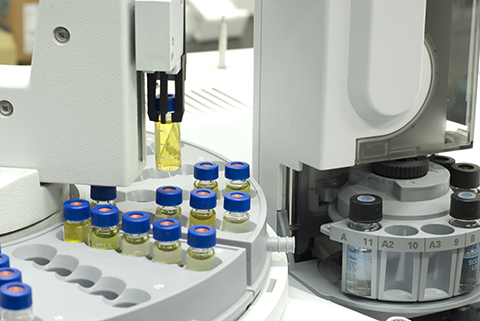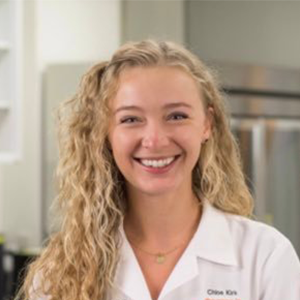The pitfalls of relying on computers
Glycosylation is a frequent post-translational modification, and the resulting glycoproteins — proteins decorated with carbohydrates — are involved in many functions that influence proteins’ physical and immunological properties. This means researchers need software that correctly characterizes glycosylation and identifies the types of glycoproteins involved.
Two important types of glycoproteins are O-linked and N-linked, so called because sugars are attached to the protein through an oxygen atom (O) or nitrogen atom (N) of the residues they bind to. Researchers have limited knowledge about protein glycosylation, especially O-glycosylation. According to Zsuzsanna Darula, head of the Single Cell Omics Advanced Core Facility at the Hungarian Center of Excellence for Molecular Medicine, or HCEMM, that’s due to a number of factors: “their impressive heterogeneity, the inability to predict which residues may be modified, the identified modification sites are not always occupied, and several, rather different glycans may modify the same residue.”

Mass spectrometry, a valuable tool for discovering protein modifications, works by measuring the mass of an intact molecule and then fragmenting the molecule and measuring its pieces to decipher its chemical structure. Using the latest mass spectrometers with improved mass accuracy and detection sensitivity, Adam Pap and collaborators at the Biological Research Centre and HCEMM analyzed the largest intact human O-glycopeptide data set to date from human urine samples.
In the lab’s initial analysis, Pap noticed that the urinary O-glycosylation landscape was more complicated than expected. The team ran the data through four automated interpretation search engines and also characterized it manually. They noticed large discrepancies among the search engine data interpretations, which they published recently in the journal Molecular & Cellular Proteomics.
The team originally had hoped to identify O-glycosylation differences between healthy individuals and cancer patients and, thus, potential biomarkers of bladder cancer. Instead, “We discovered in the process that our tools are not good enough yet for that purpose,” Darula and Pap wrote in an email, “and we focused on the shortcomings and necessary improvements of data interpretation software.”
More than half of the O-glycopeptides were picked up by only one of the four search engines, and some N-glycopeptides even qualified as O-glycosylation candidates, according to certain software. Only about 20% of the identifications were supported by three or four of the programs.
Glycopeptides are tricky to characterize. A researcher must determine both the sequence of the peptide and the number and composition of the individual modifying glycans, as well as their attachment sites. The authors recommend applying two fragmentation methods during the analysis: higher-energy collision-induced dissociation, or HCD, and electron-transfer dissociation and HCD in combination. The resulting spectra must be used in concert for the data interpretation.
According to Darula and Pap, the team’s secret weapon was inspecting the data themselves, and in doing so they reported about 35 novel structures.
“Our study should be a warning for both the scientific community and the general public that we all want an easy and quick answer to most of our questions and for this reason, we throw our critical thinking aside and trust the computers too much,” they wrote.
Darula and her team urge closer collaboration between software developers and mass spectrometry groups to improve the code accuracy in glycopeptide assignments.
Enjoy reading ASBMB Today?
Become a member to receive the print edition four times a year and the digital edition monthly.
Learn moreGet the latest from ASBMB Today
Enter your email address, and we’ll send you a weekly email with recent articles, interviews and more.
Latest in Science
Science highlights or most popular articles

The science of staying strong
Muscles power every movement, but they also tell the story of aging itself. Scientists are uncovering how strength fades, why some species resist it and what lifestyle and molecular clues could help preserve muscle health for life.

Bacteriophage protein could make queso fresco safer
Researchers characterized the structure and function of PlyP100, a bacteriophage protein that shows promise as a food-safe antimicrobial for preventing Listeria monocytogenes growth in fresh cheeses.

Building the blueprint to block HIV
Wesley Sundquist will present his work on the HIV capsid and revolutionary drug, Lenacapavir, at the ASBMB Annual Meeting, March 7–10, in Maryland.

Gut microbes hijack cancer pathway in high-fat diets
Researchers at the Feinstein Institutes for Medical Research found that a high-fat diet increases ammonia-producing bacteria in the gut microbiome of mice, which in turn disrupts TGF-β signaling and promotes colorectal cancer.

Mapping fentanyl’s cellular footprint
Using a new imaging method, researchers at State University of New York at Buffalo traced fentanyl’s effects inside brain immune cells, revealing how the drug alters lipid droplets, pointing to new paths for addiction diagnostics.

Designing life’s building blocks with AI
Tanja Kortemme, a professor at the University of California, San Francisco, will discuss her research using computational biology to engineer proteins at the 2026 ASBMB Annual Meeting.

